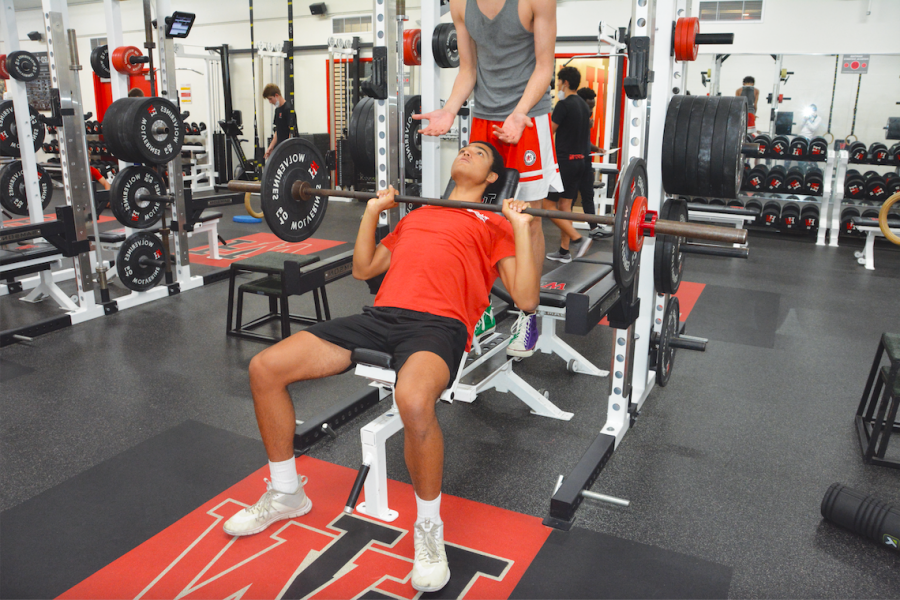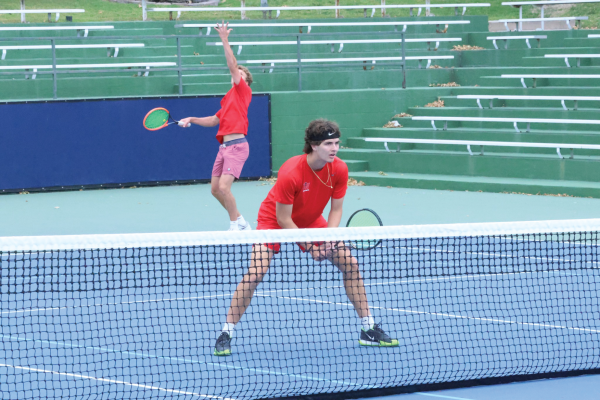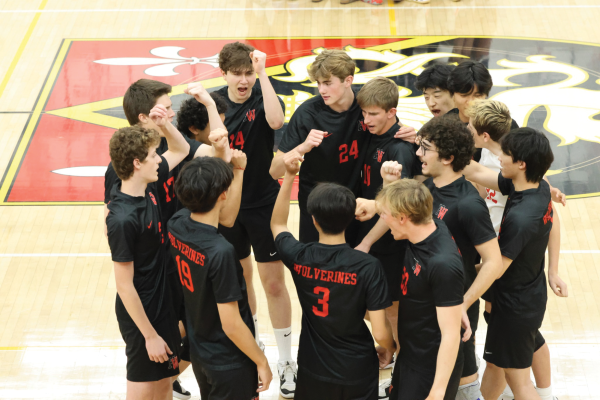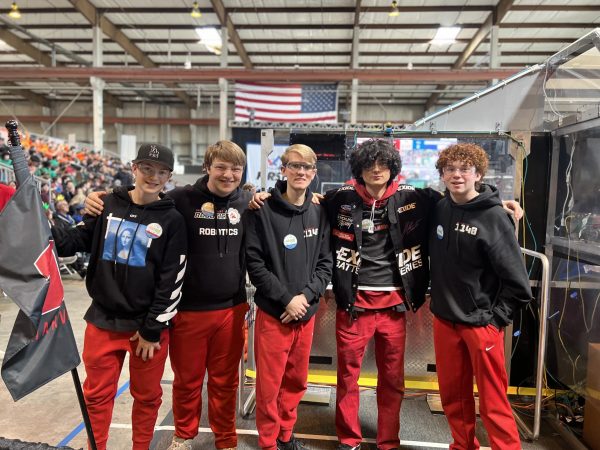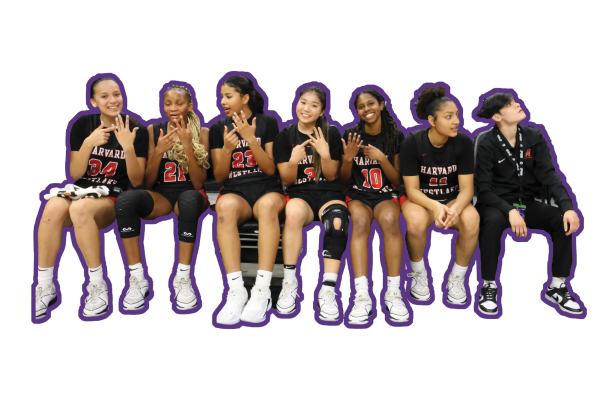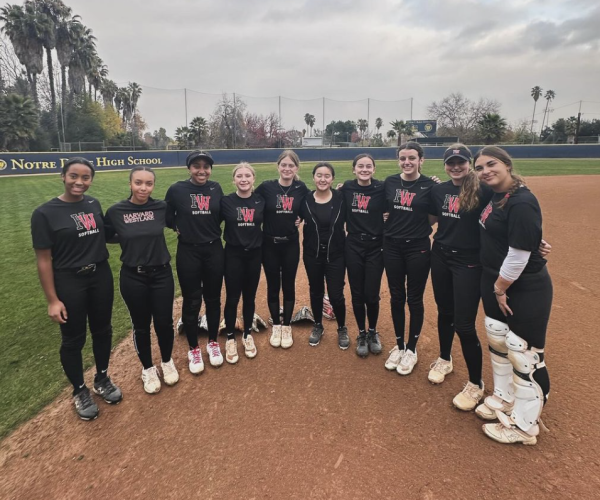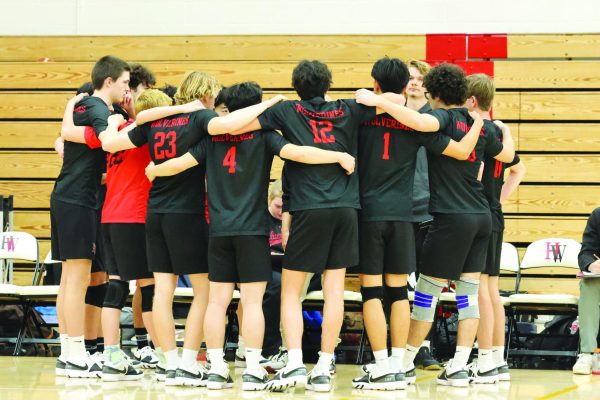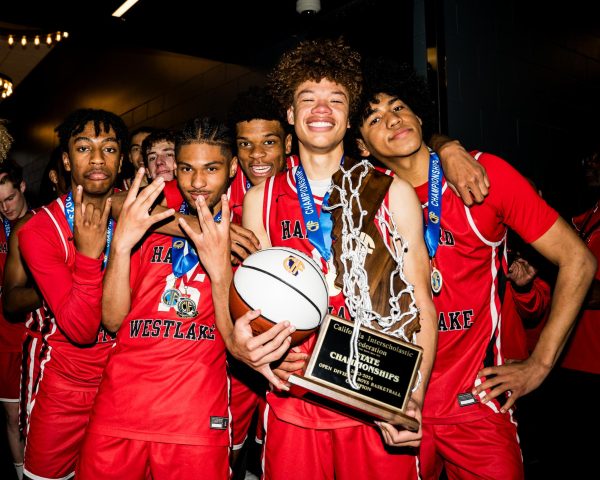Perfecting Performance
November 21, 2021
As he sprinted around the track, Ollin DeAntonio ’22 felt the cold fog against his face as he ran another lap. All around, his teammates’ shoes softly pattered against the track, their exhausted breaths echoing his own.
DeAntonio pushed to maintain his pace as he passed Wrestling Program Head Junior Amazan, who held a stopwatch in his hand. It was Block 1, just after 8 a.m., and DeAntonio and his teammates were in the middle of an endurance exercise for their Strength and Conditioning class.
In its first year being offered at the school, the Strength and Conditioning course gives student-athletes the opportunity to complete their training and weight lifting sessions during the school day. DeAntonio said there are few downsides to the new training routine, and he cited more free time after school and a mental break in the middle of the day as benefits of the class.
“I would say the best part of lifting [during the school day] is that you can relax from schoolwork and have fun with your teammates,” DeAntonio said. “[However], it is inconvenient sometimes that, after the lift, we shower and have to rush to class in the break period.”
DeAntonio said Amazan plans a different workout every class, each one focused on a new aspect of the sport the class’s athletes play for.
“Coach Amazan is the boys soccer team lifting coach and works with [Boys Soccer Program Head Michael Erush] to prepare us for the upcoming season,” DeAntonio said. “We usually do some form of fitness, such as running long distance or sprint repetitions.”
Amazan said the Athletic Department offers the Strength and Conditioning class to members of the boys soccer team, boys water polo team and boys basketball team during the majority of their seasons. He said he takes a regimented approach to his class, emphasizing proper athletic technique and injury prevention.
“We normally start off class with injury prevention protocol, which entails showing our athletes how to take care of their bodies and [warm up] muscles they will be using for the day,” Amazan said. “After that, we shift to a light warmup and conditioning or speed series out on the field. That is followed by a strength session, where we look at strengthening patterns that [players] use constantly on the field of play. Finally, we finish up with some auxiliary work that focuses on smaller but extremely important muscles to our sport.”
In preparation for the upcoming soccer season, Amazan said he transferred his focus away from weight training and toward movement quality. He said although the class requires intense physical engagement during the school day, participating student-athletes come to the class willing to put in their best effort.
“Our athletes are pretty self-motivated, but in order to keep them focused, I constantly remind them of their ultimate team goals,” Amazan said. “I help them visualize what it will feel like when they reach their goals and continue to remind them how great they are and how unstoppable they can be if they continue to work hard.”
Boys soccer team center defender Asher Rossen ’23 said the Strength and Conditioning class allows him to bring full energy to his workouts.
“I get the hardest [part of my] workout out of the way early, rather than saving it for the end of the day and being drained and exhausted going into it,” Rossen said.
Rossen said although the Strength and Conditioning course saves him time after school, he struggles at times to resume academic classes because he feels drained after the weight lifting.
“I thought [taking the class] would be more efficient because I could either go home early or do homework after school,” Rossen said. “It can be a little bit mentally exhausting just because—let’s say you have a test after [the class]—it can be a little harder to focus when you are just focusing on trying to steady your breathing.”
Boys Soccer Program Head Michael Erush said while the Strength and Conditioning class prevents the entire team from lifting together, he thinks his players are developing an understanding of the purpose of sports performance through the class.
“[Amazan and I] have had a preseason meeting, and we’ve had meetings throughout the workouts,” Erush said. “There’s been a lot of positive feedback from the players and there’s been positive feedback from [Amazan] himself, so we are heading in the right direction. At least there is a foundation of strength in Sports Performance for [the soccer team].”
The Sports Science: Care and Performance class takes place in the girls locker room across from the weights room. Taught by Directors of Sports Medicine Dunford Rodill and Jeff Crelling and Executive Assistant to the Head of Athletics Julianna Souisa, Lily Weisskopf ’23 said the course focuses on human anatomy and the effects of sports-related injuries on the body.
“So far, the class has consisted of learning about different bones, muscles, tendons, ligaments, [etc.], in our bodies and how they function in different sports, as well as how they can be injured in different sports,” Weisskopf said. “We’ve also been learning about different methods and planes of movements our bodies can do.”
Weisskopf said her grandfather’s career as a doctor partially inspired her to take the course.
“[My grandfather] just retired, but he was an orthopedic surgeon for decades and therefore dealt with many sports injuries,” Weisskopf said. “He let me sit in on a few of his surgeries [on sports injuries] too, which made me even more interested. I thought learning more about the subject and the logistics of it would be awesome.”
Girls soccer right winger Dani Lynch ’23 said her sister Ally Lynch ’21, a Division I soccer player at Clemson University, advised her to take Sports Science: Care and Performance. Lynch said taking the class helps her learn more about her body as an athlete.
“I know the teachers well since they are either trainers or weight lifting coaches,” Lynch said. “I think they give great perspectives on athletes’ injury prevention and recovery. They have helped me gain a great understanding of the curriculum, and [have] taught me a lot that can help me as an athlete.”
Although she said she had enjoyed the academic aspects of the class, Lynch said she is particularly interested in the interactive activities, during which students learn to analyze situations like an athletic trainer would.
“The highlight of the class is after lectures when we do activities that expand on what we learn in lectures,” Lynch said. “For example, after we had a lecture on concussions, we did a [Sports Concussion Assessment Tool 5 (SCAT5)] test, a concussion protocol test. It was really fun to see how trainers test athletes and gain understandings of their condition through the test.”
Crelling said the purpose of the Sports Science course is to actively engage students with the physiology of sports and to inform them of different occupations in sports medicine.
“Our goal for the class is to expose students to some of the different professional areas that exist in sports today,” Crelling said. “There are some intersections of science and sport that meet in the areas of human care and performance, which can be really interesting and rewarding careers. If our students walk away with a new interest in science as it pertains to the human body or a heightened appreciation for the complexity of sports, then I think the class has met its goal.”































